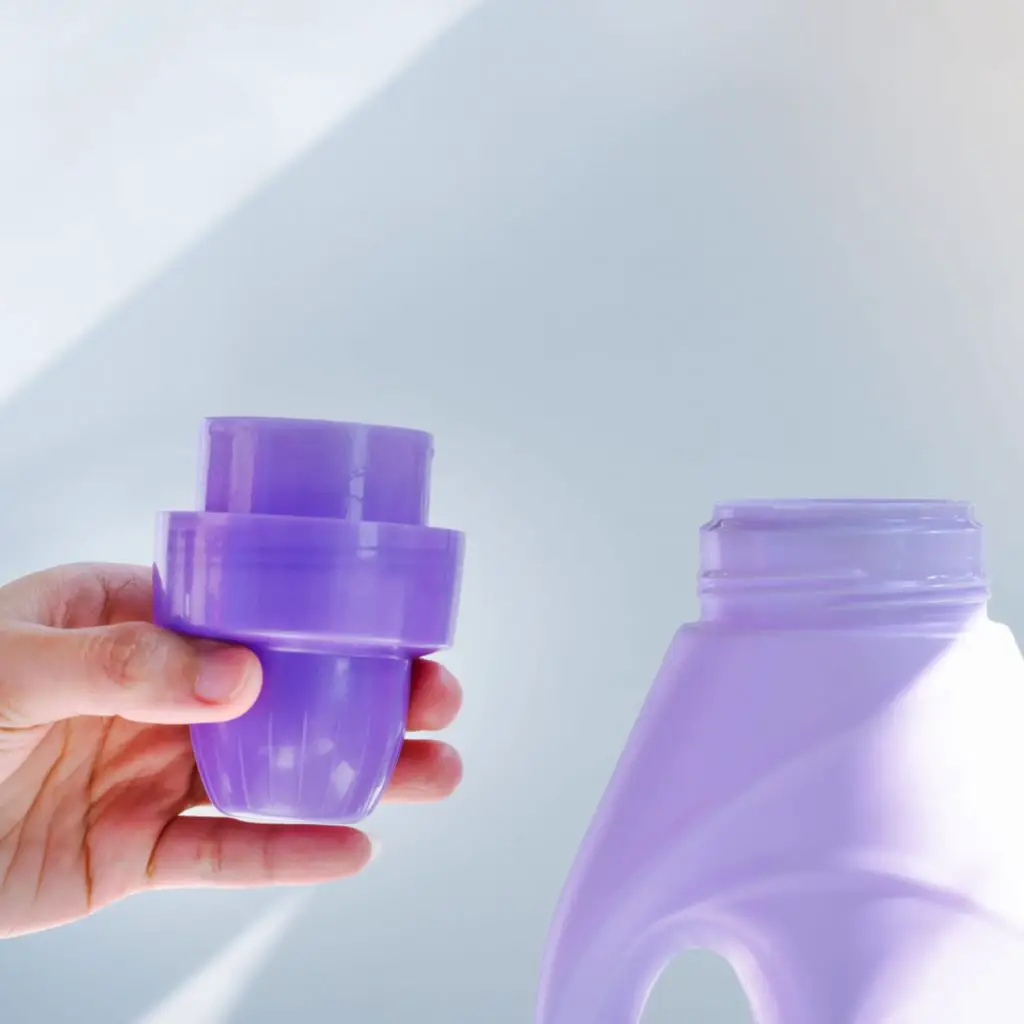Want to keep your clothes looking bright and vibrant? Follow these 12 essential tips to maintain the colors in your fabric.
Separate your laundry, wash with cold water, and choose the right detergent.
Remember to turn your clothes inside out and avoid overloading the washing machine.
Don’t iron unnecessarily and store your clothes properly.
Use fabric softener sparingly and always follow the care instructions on clothing labels.
Keep your colors popping with these easy tips!
Table of Contents
Separate Your Laundry
To maintain vibrant colors in your fabric, start by separating your laundry. This simple step is crucial in preventing fading and ensuring color retention. When you mix different colors and fabrics together in the washing machine, there’s a higher chance of colors bleeding and transferring onto other garments. This can result in dull and faded colors, diminishing the overall vibrancy of your clothes.
To prevent this, sort your laundry into different piles based on color and fabric type. Separate dark colors from light colors, and wash them separately to avoid any color bleeding. Additionally, separate delicate fabrics from heavier ones to prevent damage and preserve the integrity of each garment.
By taking the time to separate your laundry properly, you can maintain the vibrancy of your fabric for longer periods of time. This simple step goes a long way in ensuring that your clothes stay bright and colorful, even after multiple washes.
Wash With Cold Water
When washing your laundry to maintain vibrant colors, use cold water. Cold water is the best choice for preserving the brightness and integrity of your fabrics. Hot water can cause colors to fade and can even shrink certain types of fabric. By using cold water, you can ensure that your clothes stay colorful and in great condition.
In addition to using cold water, it’s also important to choose the best laundry detergent for vibrant colors. Look for detergents that are specifically formulated for color protection. These detergents are designed to prevent color fading and bleeding, keeping your clothes looking fresh and vibrant for longer.
Using cold water not only helps to maintain the vibrancy of colors, but it’s also a fabric care tip that can extend the lifespan of your garments. Cold water is less harsh on fabrics, reducing the risk of damage or wear over time. It’s especially important to use cold water when washing delicate fabrics, such as silk or wool, as hot water can cause them to lose their shape or become misshapen.
Choose the Right Detergent
Make sure you select a color-protecting detergent for vibrant fabrics. Using the right detergent is crucial in maintaining the vibrancy of your colored clothes. Look for detergents specifically formulated to preserve colors and prevent fading. These detergents are usually labeled as color-safe or color-protecting.
When washing your vibrant fabrics, it’s also a good idea to use fabric conditioner. Fabric conditioner helps keep the colors from fading by coating the fibers with a protective layer. It not only adds softness to your clothes but also helps prevent color transfer.
Preventing color transfer is another important aspect of choosing the right detergent. You don’t want the colors from one garment to bleed onto another, ruining both items. Color-protecting detergents are designed to minimize color bleeding and transfer, ensuring that your vibrant fabrics stay vibrant.
When selecting a detergent, read the labels carefully to ensure that it’s suitable for your specific fabric and color type. Some detergents are specifically formulated for bright colors, while others are better for dark or delicate fabrics. By choosing the right detergent, you can keep your vibrant fabrics looking fresh and colorful for longer.
Turn Clothes Inside Out
To maintain vibrant colors in your fabric, it’s important to regularly turn your clothes inside out. This simple step can help you avoid fading and prevent color loss. Here are three reasons why turning your clothes inside out is beneficial:
-
Protects the color: When you turn your clothes inside out before washing, the outer surface is shielded from direct contact with other garments and the agitating motion of the washing machine. This helps to prevent the color from rubbing off or fading due to friction.
-
Preserves intricate designs: Many clothes have delicate prints, embroidery, or embellishments that can easily get damaged during washing. By turning your clothes inside out, you minimize the risk of these intricate designs getting snagged or pulled, ensuring they stay vibrant and intact.
-
Reduces exposure to harsh detergents: When clothes are turned inside out, the inner layer is exposed to the detergent, while the outer layer is protected. This reduces the direct contact of the detergent with the colored fabric, preventing color loss and maintaining the vibrancy of your clothes.
Avoid Overloading the Washing Machine
To maintain vibrant colors in your fabric, it’s important to avoid overloading the washing machine. When you overload the machine with a heavy load of clothes, it can cause friction and agitation during the washing process. This can lead to color fading and damage to the fabric. To prevent this, make sure to follow the recommended load capacity mentioned in your washing machine’s manual.
In addition to avoiding heavy loads, another way to protect the colors in your fabric is by selecting the gentle cycle option on your washing machine. The gentle cycle is designed to be more delicate on fabrics, reducing the risk of color fading. This cycle uses slower and shorter agitation, minimizing the stress on the clothes.
Use Color-Safe Bleach or Vinegar
To keep your fabric colors vibrant, it’s crucial to choose the right cleaning method.
When it comes to color-safe options, you have two main choices: bleach or vinegar.
Bleach can be effective in removing tough stains, but it can also fade colors over time.
On the other hand, vinegar is a natural and gentle alternative that helps preserve the vibrancy of your fabrics.
Bleach Vs. Vinegar
Choose color-safe bleach or vinegar to maintain vibrant colors in your fabric. When it comes to preserving the colors of your garments, it’s important to consider the use of bleach alternatives and natural fabric dyes.
Here are three key points to keep in mind when deciding between bleach and vinegar:
-
Bleach alternatives: Opting for bleach alternatives can be a safer option for your fabrics. These alternatives are formulated to be gentler on the fibers, reducing the risk of color fading or damage.
-
Natural fabric dyes: If you prefer a more eco-friendly approach, natural fabric dyes can be a great choice. Made from plant-based ingredients, these dyes not only help maintain vibrant colors but also minimize the environmental impact.
-
Vinegar as a natural option: Vinegar is an effective natural alternative to bleach. It works by removing stains and odors while preserving the color of your fabric. Plus, vinegar is readily available and affordable, making it a convenient choice.
Preserving Vibrant Fabric
Maintain the vibrancy of your fabric by using color-safe bleach or vinegar.
Preserving color vibrancy is essential to prevent fading and keep your fabrics looking fresh and vibrant for longer. Color-safe bleach is a great option for removing stains without compromising the colors of your fabric. It’s specifically formulated to be gentle on colors while still effectively removing stains.
Vinegar, on the other hand, is a natural and cost-effective alternative. Adding a cup of white vinegar to your laundry load can help set the colors and prevent them from fading. Vinegar also helps to remove any residue left behind by detergents, which can dull the colors of your fabric over time.
Whether you choose color-safe bleach or vinegar, both options are effective in preserving the vibrancy of your fabrics and preventing fading.
Color-Safe Cleaning Methods
Preserve the vibrant colors of your fabric by utilizing color-safe bleach or vinegar as your go-to cleaning methods. These color-safe cleaning products are designed to remove stains and dirt without fading or dulling the colors of your clothes.
Here are three effective methods to keep your fabric colors looking vibrant:
-
Use color-safe bleach: Unlike regular bleach, color-safe bleach is specifically formulated to protect the colors of your fabric. It removes stains and brightens colors without causing any damage.
-
Vinegar: Vinegar is a natural alternative to chemical detergents that can help maintain the vibrancy of your fabric. Add half a cup of vinegar to your laundry during the rinse cycle to remove any detergent residue and keep the colors bright.
-
Wash in cold water: Hot water can cause colors to fade and bleed. Washing your colored fabrics in cold water helps to preserve their vibrant hues.
Skip the Dryer, Air Dry Instead
To maintain the vibrancy of your fabrics, opt for air drying instead of using a dryer. Air drying offers a range of benefits that can help preserve the colors and quality of your garments. Unlike the heat generated by a dryer, air drying is a gentle and natural method that minimizes the risk of color fading or bleeding. It also reduces the wear and tear caused by the tumbling action of the dryer. Additionally, air drying is an eco-friendly alternative that saves energy and reduces your carbon footprint.
To help you understand the advantages of air drying, here is a table highlighting the benefits and alternative drying methods:
| Air Drying Benefits | Alternative Drying Methods |
|---|---|
| Preserves vibrant colors | Tumble drying |
| Minimizes color fading and bleeding | Machine drying |
| Reduces wear and tear | Spin drying |
| Eco-friendly | Heat drying |
| Saves energy | Radiator drying |
Avoid Direct Sunlight When Drying
Hang your clothes in the shade to prevent color fading. Direct sunlight can be detrimental to the vibrant colors of your fabrics. Here are a few reasons why you should avoid drying your clothes in direct sunlight:
-
UV rays: Sunlight contains ultraviolet (UV) rays, which can cause the colors in your fabrics to fade over time. These rays penetrate the fabric and break down the dye molecules, resulting in a loss of color intensity. By hanging your clothes in the shade, you can minimize exposure to these harmful rays and preserve the vibrancy of your fabrics.
-
Heat: Sunlight not only brings UV rays but also heat. High temperatures can accelerate the process of color fading in fabrics. When you air dry your clothes in direct sunlight, the combination of heat and UV rays can cause the dye molecules to break down more quickly. Hanging your clothes in the shade allows them to dry at a more moderate temperature, reducing the risk of color fading.
-
Uneven fading: Direct sunlight can cause uneven fading in fabrics. Areas that are exposed to the sun for prolonged periods may fade more quickly than other areas, resulting in a patchy or splotchy appearance. By hanging your clothes in the shade, you can ensure a more uniform drying process and maintain the overall color consistency of your fabrics.
Don’t Iron Clothes Unnecessarily
Don’t waste your time and energy ironing clothes unnecessarily. Excessive heat from ironing can actually damage the fabric and cause colors to fade faster.
Heat Damages Fabric
You should avoid unnecessarily ironing your clothes, as frequent ironing can damage the fabric due to heat. Excessive heat can cause the fabric fibers to weaken, leading to color fading and loss of vibrancy.
To protect your fabric and retain its color, follow these tips:
-
Use a lower heat setting on your iron: Adjust the heat setting on your iron to a lower temperature to minimize the risk of heat damage.
-
Use a pressing cloth: Place a clean cloth, such as a thin cotton towel or muslin, between the iron and the fabric to provide an extra layer of protection.
-
Iron inside out: When ironing, turn your clothes inside out to protect the outer layer of the fabric from direct heat exposure.
Preserve Colors Longer
To maintain vibrant colors in your fabric and extend their longevity, it’s advisable to minimize unnecessary ironing. Ironing clothes unnecessarily can contribute to the fading of colors and reduce the overall longevity of the fabric. Heat from the iron can cause the dyes in the fabric to break down, leading to color fading and loss of vibrancy.
Over time, frequent ironing can also weaken the fabric fibers, making them more prone to damage. Therefore, it’s important to only iron clothes when necessary and to use the appropriate heat setting for the fabric.
Store Clothes Properly
Properly storing your clothes is essential for maintaining vibrant colors in fabric. Here are some tips to help you store your clothes correctly:
-
Proper folding: When you fold your clothes, make sure to fold them neatly and avoid leaving any creases, as this can cause the colors to fade over time. Use appropriate folding techniques for different types of clothes, such as shirts, pants, and dresses, to prevent any damage to the fabric.
-
Using garment bags: Garment bags are a great investment when it comes to storing clothes. They provide protection from dust, dirt, and sunlight, which can all contribute to color fading. Place your clothes in garment bags and hang them in a cool, dry place to keep them looking vibrant for longer.
-
Separate by color: It’s important to separate your clothes by color when storing them. Dark-colored clothes, such as black or navy, can bleed dye onto lighter-colored fabrics, causing discoloration. Keep your bright and light-colored clothes separate from dark ones to prevent any color transfer.
Use Fabric Softener Sparingly
To maintain vibrant colors in fabric, how can you limit the use of fabric softener? While fabric softener can make your clothes feel softer and smell great, excessive use can actually cause colors to fade. So, it’s important to use fabric softener sparingly and effectively. Here are some tips to help you maintain vibrant colors in your fabrics:
-
Use fabric softener sparingly: Instead of pouring fabric softener directly into the dispenser, dilute it with water before adding it to your laundry. This will ensure that it’s evenly distributed and won’t leave residue on your fabrics.
-
Choose alternative fabric softeners: If you’re concerned about the impact of traditional fabric softeners on your clothes, there are alternative options available. Wool dryer balls, for example, can help soften fabrics without any chemicals or residue.
To give you a better understanding of the effectiveness of fabric softeners, here is a comparison table:
| Fabric Softener Type | Effectiveness | Chemical Residue |
|---|---|---|
| Traditional | Moderate | Yes |
| Wool Dryer Balls | High | No |
| Vinegar | Low | No |
Follow Care Instructions on Clothing Labels
To keep your fabric colors vibrant and prevent fading, it’s important to follow the care instructions on clothing labels. These instructions are specifically designed to ensure the longevity of your garments and maintain their vibrant colors.
Proper Care Prevents Fading
Follow the care instructions on clothing labels to prevent fading and maintain the vibrant colors of your fabrics. Proper care is essential to prevent color fading and extend the lifespan of your favorite garments.
Here are some tips to help you take care of your fabrics:
-
Separate your laundry: Sort your clothing by color to avoid color bleeding. Washing dark and light-colored clothes separately can prevent color transfer and fading.
-
Use the right detergent: Choose a detergent specifically designed for colored fabrics. Avoid using harsh detergents or bleach, as they can strip the color from your clothes.
-
Wash in cold water: Washing your clothes in cold water helps to preserve the color and prevent fading. Hot water can cause colors to bleed and fade faster.
Label Instructions Ensure Longevity
Ensure the longevity of your fabrics by carefully following the care instructions on clothing labels. Label instructions are of utmost importance when it comes to maintaining the vibrant colors of your fabrics. By following these instructions, you can prevent color fading and keep your clothes looking fresh and vibrant for longer periods of time. To emphasize the significance of label instructions, here is a table showcasing some fabric color maintenance techniques:
| Fabric Color Maintenance Techniques |
|---|
| Wash dark colors separately |
| Use cold water for washing |
| Avoid using bleach |
| Turn clothes inside out before washing |
| Hang clothes to dry instead of using a dryer |
Frequently Asked Questions
Can I Use Hot Water to Wash Colored Fabric?
You should avoid using hot water to wash colored fabric because it can cause the colors to fade. Instead, opt for cold water. Also, make sure to use color safe laundry detergent to preserve the vibrancy of your clothes.
What Happens if I Overload the Washing Machine?
If you overload the washing machine, it can lead to insufficient water and detergent distribution, causing poor cleaning and potential damage. To prevent color bleeding, avoid overloading and follow proper fabric care instructions.
How Long Does It Take for Fabric Colors to Fade in Direct Sunlight?
To prevent color fading in fabric and protect it from sunlight, follow these tips. Direct sunlight can cause colors to fade over time. It’s important to take precautions and limit exposure to maintain vibrant colors.
Is It Necessary to Turn Clothes Inside Out When Washing?
Turning clothes inside out when washing is beneficial. Air drying clothes instead of using a dryer helps retain vibrant colors. Fabric softeners, however, can negatively impact color retention in clothing.
Can I Use Any Type of Detergent to Wash Colored Fabric?
You should choose the right laundry detergent for colored fabric to prevent color bleeding in the wash. Avoid using any type of detergent and follow these tips to maintain vibrant colors in your clothes.
- Recycling Nonwoven Fabrics: Is It Possible? - July 11, 2025
- Recycling Nonwoven Fabrics: Is It Possible? - July 11, 2025
- Recycling Nonwoven Fabrics: Is It Possible? - July 11, 2025




